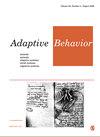A framework for visual-based adaptive object-robot interaction of a mobile service robot
IF 1.3
4区 计算机科学
Q4 COMPUTER SCIENCE, ARTIFICIAL INTELLIGENCE
引用次数: 0
Abstract
The COVID-19 pandemic (hereinafter “the pandemic”) necessitated social distancing measures and limited physical contact, prompting the exploration of alternative methods for tasks like object delivery. Mobile service robots emerged as a potential solution, offering a bridge between humans and various tasks. While existing techniques have been introduced to enable robots to deliver objects in an end-to-end manner, they come with limitations. Grippers, for instance, can deliver only one object per round, cabinet robots require manual speed tuning to keep the object in place, and object holders lack generalizability. Inspired by the idea of human nature to use a tray to deliver the object, we developed the Visual-Based Adaptive Interaction System (hereinafter “VAIS”), a novel learning system, to improve service delivery using visual information and a fast neural learning mechanism. Within this system, the robot learns the optimal angular rotational and linear translational moving speeds to effectively transport objects placed on a tray without an extra holder. The robot validates these learnt movements by successfully completing multiple-object delivery tasks along designated routes. The results exhibit that the robot can utilize online learning after a few attempts to determine its proper moving speed and deliver different objects to a given location.基于视觉的移动服务机器人自适应物体-机器人交互框架
COVID-19 大流行病(以下简称 "大流行病")使得人们必须采取社会隔离措施,限制身体接触,从而促使人们探索执行物品运送等任务的替代方法。移动服务机器人作为一种潜在的解决方案应运而生,成为人类与各种任务之间的桥梁。虽然现有的技术可以让机器人以端到端的方式运送物品,但它们也有局限性。例如,夹持器每轮只能运送一个物体,柜式机器人需要手动调整速度以保持物体到位,而物体夹持器则缺乏通用性。受人类使用托盘递送物品的天性启发,我们开发了基于视觉的自适应交互系统(以下简称 "VAIS"),这是一种新型学习系统,可利用视觉信息和快速神经学习机制改善服务递送。在这一系统中,机器人可以学习最佳的角度旋转和线性平移移动速度,以便在没有额外支架的情况下有效地运送放置在托盘上的物品。机器人通过在指定路线上成功完成多个物品的运送任务来验证这些学习到的动作。结果表明,经过几次尝试后,机器人可以利用在线学习来确定其适当的移动速度,并将不同的物体运送到指定位置。
本文章由计算机程序翻译,如有差异,请以英文原文为准。
求助全文
约1分钟内获得全文
求助全文
来源期刊

Adaptive Behavior
工程技术-计算机:人工智能
CiteScore
4.30
自引率
18.80%
发文量
34
审稿时长
>12 weeks
期刊介绍:
_Adaptive Behavior_ publishes articles on adaptive behaviour in living organisms and autonomous artificial systems. The official journal of the _International Society of Adaptive Behavior_, _Adaptive Behavior_, addresses topics such as perception and motor control, embodied cognition, learning and evolution, neural mechanisms, artificial intelligence, behavioral sequences, motivation and emotion, characterization of environments, decision making, collective and social behavior, navigation, foraging, communication and signalling.
Print ISSN: 1059-7123
 求助内容:
求助内容: 应助结果提醒方式:
应助结果提醒方式:


